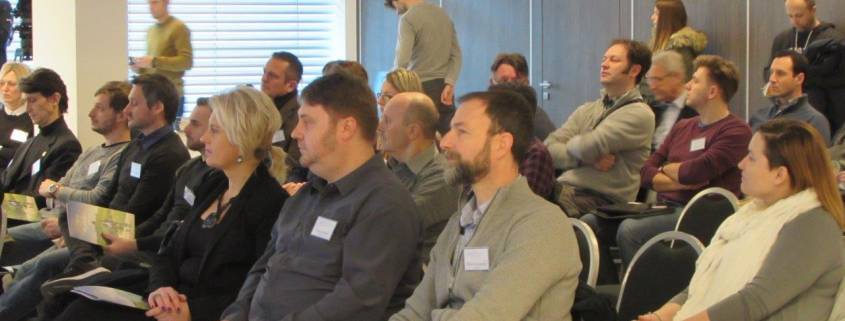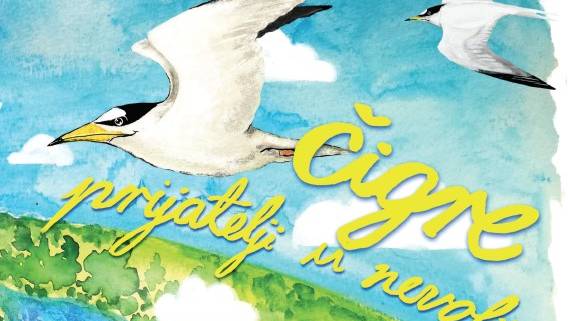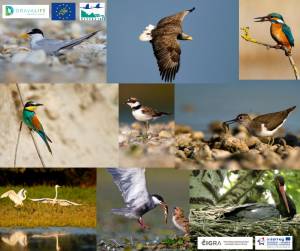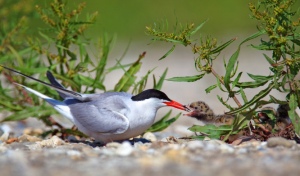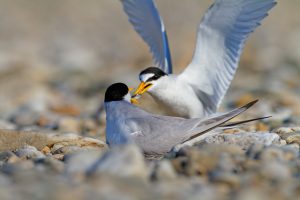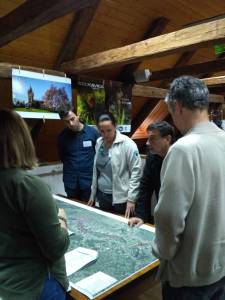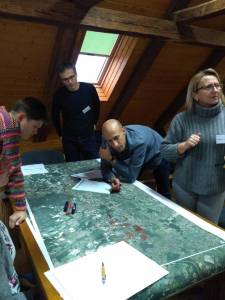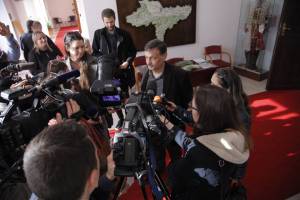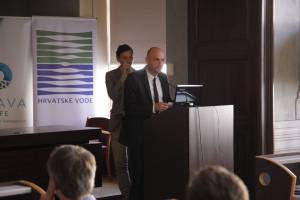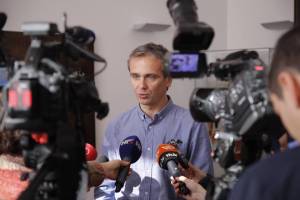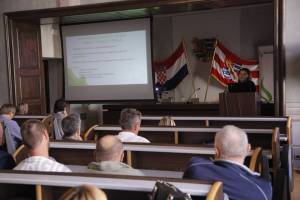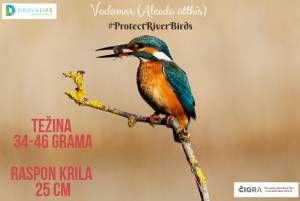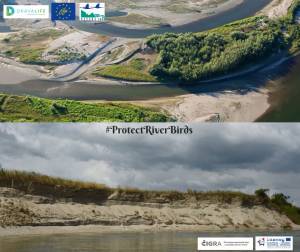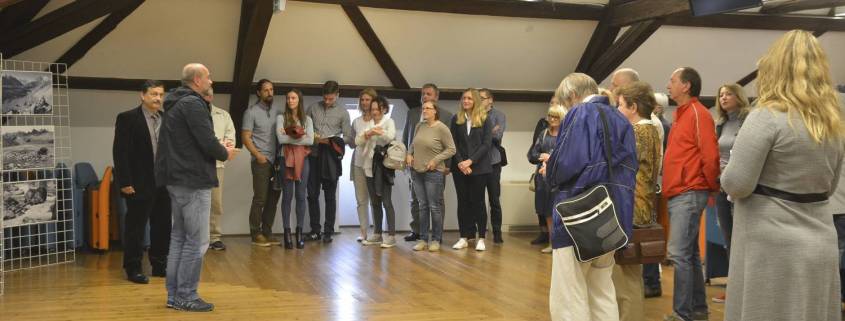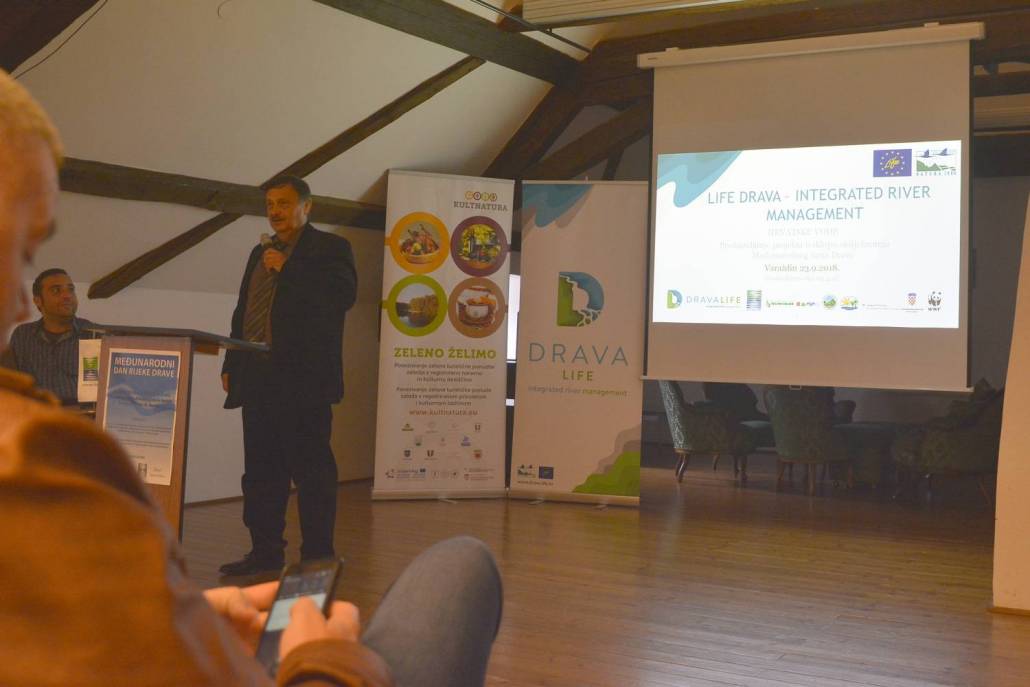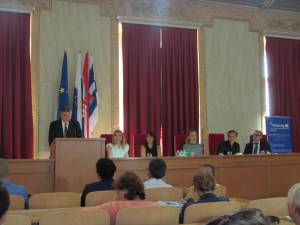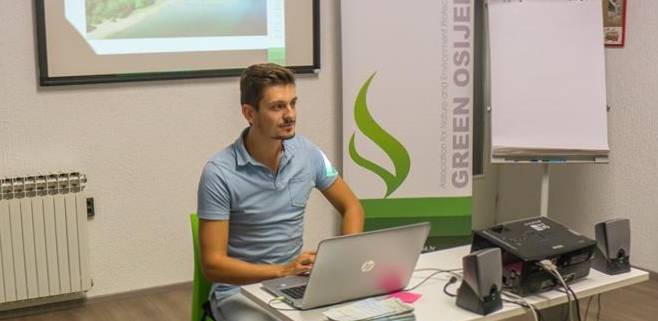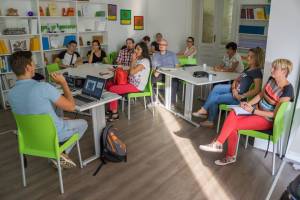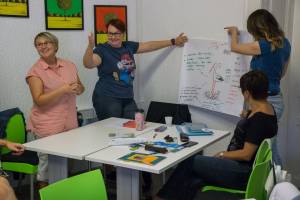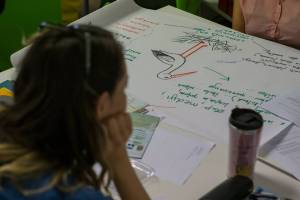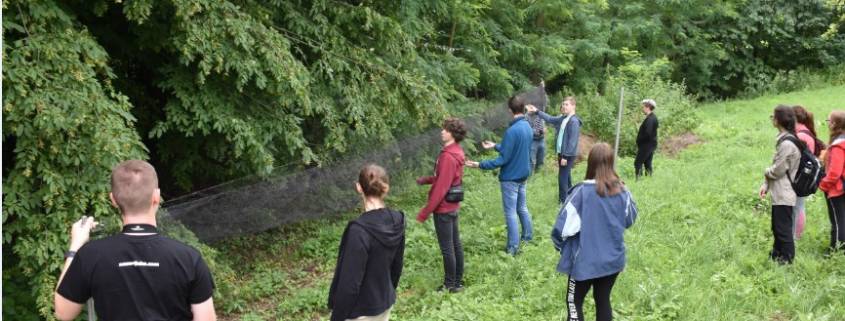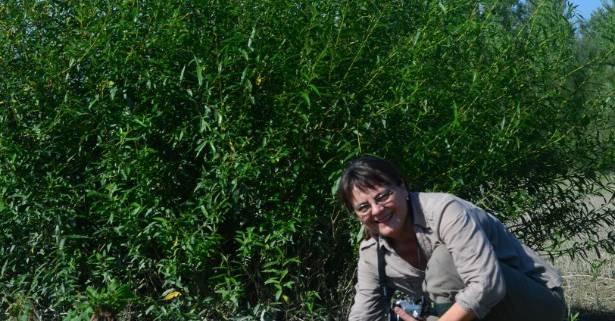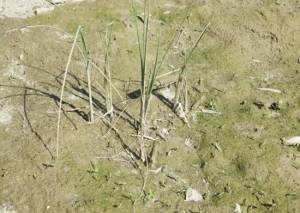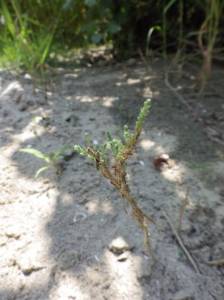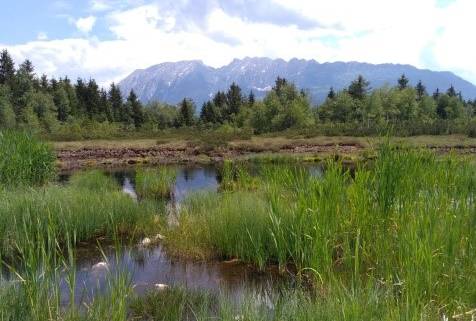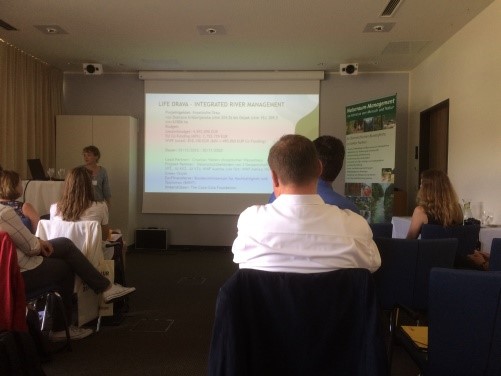DRAVA LIFE project presented on an expert conference in Čakovec
Čakovec – Expert conference on “Birdwatching Tourism in Continental Croatia and its Development Opportunities” was held from 31st January to 1st February 2019 in Čakovec. The event was organized by the Public Institution Međimurska priroda and supported by several tourism and nature protection institutions. The goal of the conference was to bring together all relevant stakeholders in the birdwatching sector of tourism and present existing possibilities and birdwatching tours offered by e.g. Lonjsko Polje Nature Park, Kopački Rit Nature Park and others.

Participants of the expert conference in Čakovec, Croatia (© Međimurska priroda)

Branka Španiček presenting Drava LIFE project (© Međimurska priroda)
DRAVA LIFE project and its activities connected to the development of Nature Visitor Guidance Plan and Action Plan for River Birds were presented by Branka Španiček (WWF Adria). The establishment of a joint visitor guidance framework for the whole Drava River section in Croatia is particularly important for the protection of sensitive bird species such as the white-tailed eagle (Halietus albicilla), black stork (Cioconia nigra) or little and common tern (Sternula albifrons and Sterna hirundo).
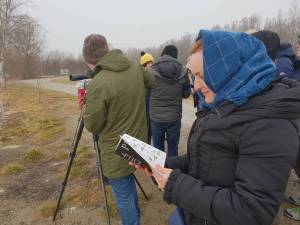
Birdwatching on the Drava River (© WWF)
The Visitor Guidance Plan aims at the harmonization of existing recreational or touristic uses with the needs of nature and nature conservation concepts, reduction of existing conflicts and the creation of benefits for both visitors and nature conservation. On the other hand, to ensure protection of sensitive bird species in highly international area, the future 5-country Biosphere Reserve “Mura-Drava-Danube”, DRAVA LIFE project partners are developing an Action Plan for River Birds. The development of such an action plan for selected river bird species is the first step towards the establishment of long-term preservation measures.
More information on the expert conference can be found here (Croatian language).

